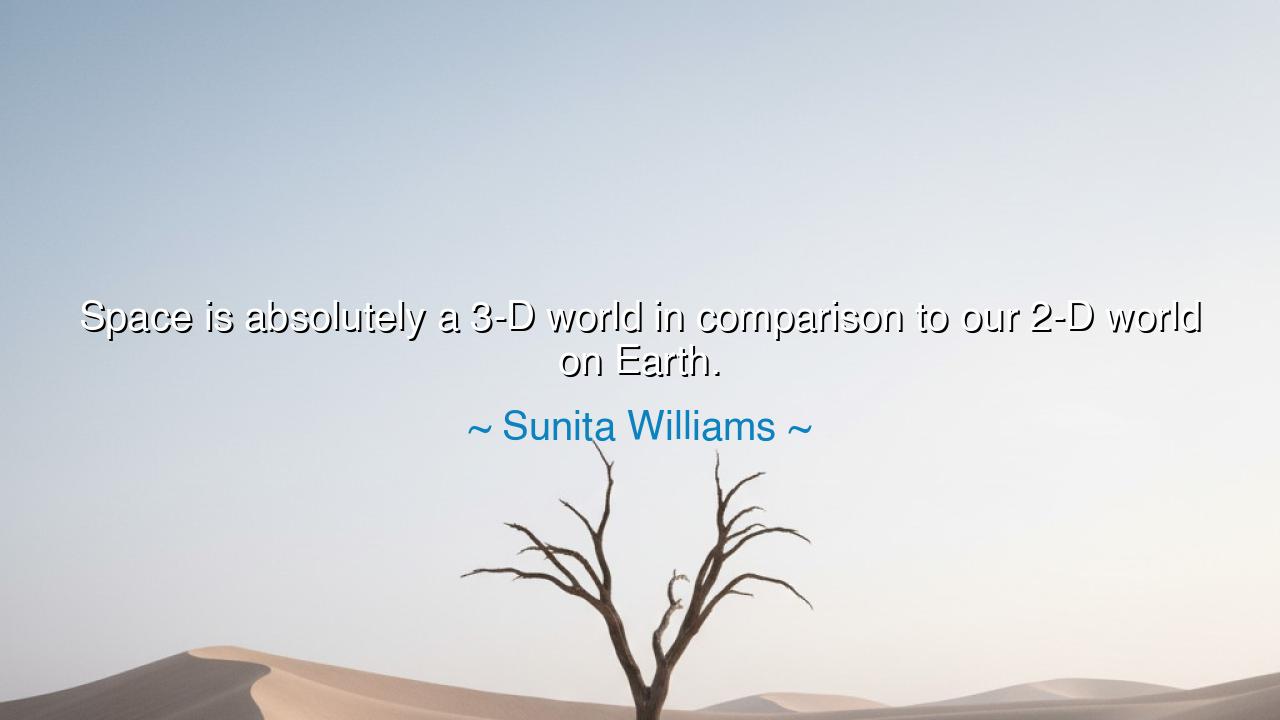
Space is absolutely a 3-D world in comparison to our 2-D world on






Hear the words of Sunita Williams, voyager of the stars, who once cast her gaze from the silence of orbit and declared: “Space is absolutely a 3-D world in comparison to our 2-D world on Earth.” At first, these words sound like the speech of a scientist, describing motion, direction, and dimension. Yet beneath them lies a deeper truth, a parable for the soul: that life expands when the boundaries we take for granted are lifted, and that what we call “normal” may be only a shadow of greater possibility.
On Earth, we move within the cage of gravity, our steps pressed into the plane of the ground. We think in two directions—forward and backward, left and right—and rarely imagine the fullness of what could be. In space, however, there is no up and down, no floor and ceiling. The body floats, and the mind awakens to the reality of a true three-dimensional world, where every movement is free and every direction is open. Williams, who spent months aboard the International Space Station, did not merely describe physics—she bore witness to freedom.
This transformation is not only of the body, but of the spirit. For when an astronaut learns to live in three dimensions, they are forced to abandon the habits of earthbound thinking. No longer can one rely on the floor for balance or the ceiling for direction. One must embrace disorientation, and in so doing, gain a new vision. So it is with life: when the boundaries of custom and expectation fall away, when we dare to float into the unknown, we discover dimensions of ourselves we never knew existed.
History gives us many such awakenings. When sailors once feared the edge of the world, they sailed only in the “two dimensions” of coasts and known waters. But when Columbus and Magellan braved the open sea, they discovered a vast globe—an extra dimension of possibility. When the Wright brothers looked at birds and refused to remain bound to the ground, they brought humanity into the skies. Each of these was a moment of stepping from 2-D to 3-D, from limitation to freedom. Sunita Williams’s words remind us that such leaps are not only physical, but also spiritual.
Her own journey illustrates this. Imagine her drifting in the cupola of the Space Station, Earth turning below like a living jewel, every horizon revealed at once. In such a place, one realizes that the borders and divisions of nations are but lines drawn in the dust of the 2-D world. In orbit, humanity appears as one people on one planet, united in its fragility. To step into the 3-D world of space is to see beyond illusion, to recognize that many of the walls we build on Earth are as false as the idea that there is only one plane of movement.
The lesson is clear: do not confine yourself to a two-dimensional life, bound by habit, fear, or convention. Seek out the “third dimension”—the possibilities unseen by most, the perspectives that free you from narrow vision. Whether in science, in art, in faith, or in love, there are always greater dimensions waiting. It is only when you dare to leave the familiar plane that you begin to see the vastness of existence.
Therefore, O seekers, hear the teaching: life is meant to be lived in three dimensions. Do not crawl upon the flat earth of routine when the boundless sky is before you. Stretch your vision, rise above the ordinary, and embrace the disorientation that comes with growth. For it is in that moment, when gravity no longer dictates your steps, that you discover the fullness of freedom. This is the gift of space, and the wisdom of Sunita Williams: that beyond the world we know lies a greater one, if only we are brave enough to step into it.






AAdministratorAdministrator
Welcome, honored guests. Please leave a comment, we will respond soon